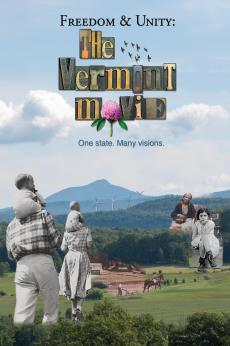Change, Not Charity: The Americans with Disabilities Act
The emotional and dramatic story of the decades-long push for equality and accessibility that culminated in the passage of the Americans with Disabilities Act (ADA) in 1990. A story of courage and perseverance, the film highlights the determined people who literally put their bodies on the line to achieve their goal and change the lives of all Americans. From AMERICAN EXPERIENCE.
Previews + Extras

Trailer | Change, Not Charity: The Americans with Disabilities Act
S37 E2 - 2m 24s
The dramatic story of the passage of the Americans with Disabilities Act (ADA) in 1990. The film highlights the determined people who literally put their bodies on the line to pass the legislation that changed the lives of all Americans.

Trailer | Extended Audio Description | Change, Not Charity: The Americans with Disabilities Act
S37 E2 - 2m 50s
EXTENDED AUDIO DESCRIPTION The dramatic story of the passage of the Americans with Disabilities Act (ADA) in 1990. The film highlights the determined people who literally put their bodies on the line to pass the legislation that changed the lives of all Americans.

Trailer | ASL | Change, Not Charity: The Americans with Disabilities Act
S37 E2 - 2m 23s
ASL The dramatic story of the passage of the Americans with Disabilities Act (ADA) in 1990. The film highlights the determined people who literally put their bodies on the line to pass the legislation that changed the lives of all Americans.

Chapter 1 | Change, Not Charity: The Americans with Disabilities Act
S37 E2 - 9m 17s
Watch a preview of Change, Not Charity: The Americans with Disabilities Act.

Chapter 1 | ASL | Change, Not Charity: The Americans with Disabilities Act
S37 E2 - 9m 17s
ASL Watch a preview of Change, Not Charity: The Americans with Disabilities Act.

Chapter 1 | Extended Audio Description | Change, Not Charity: The Americans with Disabilities Act
S37 E2 - 11m 31s
EXTENDED AUDIO DESCRIPTION Watch a preview of Change, Not Charity: The Americans with Disabilities Act.

This 8-year-old girl changed history with one huge climb
S37 E2 - 3m 27s
Meet the protesters who climbed their way into history—and changed how all Americans live.

They Took Sledgehammers to Sidewalks – Here’s Why | The Curb Cut Effect
S37 E2 - 7m 2s
Curb cuts—those small ramps at the edge of sidewalks—are now a standard part of city design, but they didn’t exist until disability rights advocates demanded them. In the late 1960s and early 1970s, students with disabilities at the University of California, Berkeley began organizing for better access to public spaces.

They Took Sledgehammers to Sidewalks – Here’s Why | ASL | The Curb Cut Effect
S37 E2 - 7m 6s
ASL Curb cuts—those small ramps at the edge of sidewalks—are now a standard part of city design, but they didn’t exist until disability rights advocates demanded them. In the late 1960s and early 1970s, students with disabilities at the University of California, Berkeley began organizing for better access to public spaces.

They Took Sledgehammers to Sidewalks – Here’s Why | Extended Audio Description | The Curb Cut Effect
S37 E2 - 8m 9s
EAD Curb cuts—those small ramps at the edge of sidewalks—are now a standard part of city design, but they didn’t exist until disability rights advocates demanded them. In the late 1960s and early 1970s, students with disabilities at the University of California, Berkeley began organizing for better access to public spaces.

How Captions Went from Niche to Necessity | The Curb Cut Effect
S37 E2 - 6m 48s
For the first three decades of television, there were no captions of any kind, leaving Deaf viewers unable to fully participate in a medium that shaped culture and conversation. The fight for closed captioning was a battle for access and inclusion. Deaf advocates spent decades pushing broadcasters, lawmakers, and technology companies to make television—and later, the internet—accessible.

How Captions Went from Niche to Necessity | ASL |The Curb Cut Effect
S37 E2 - 6m 48s
ASL For the first three decades of television, there were no captions of any kind, leaving Deaf viewers unable to fully participate in a medium that shaped culture and conversation. The fight for closed captioning was a battle for access and inclusion. Deaf advocates spent decades pushing broadcasters, lawmakers, and technology companies to make television—and later, the internet—accessible.
Similar Shows




Stories of Survival
History

The Ghost Army
History

When Music Makes History
History

SAS Rogue Warriors
History



PBS PASSPORT
Stream tens of thousands of hours of your PBS and local favorites with WETA+ and PBS Passport whenever and wherever you want. Catch up on a single episode or binge-watch full seasons before they air on TV.